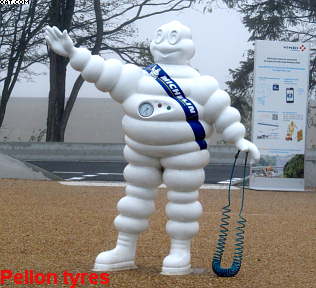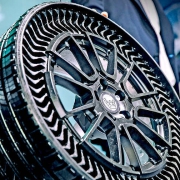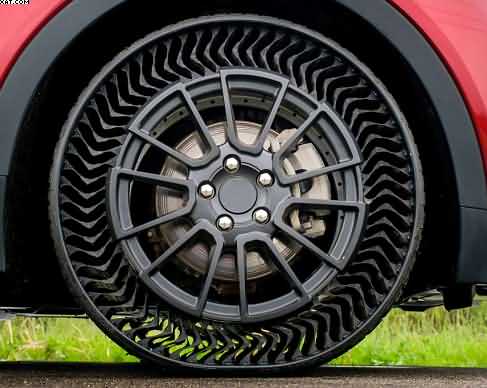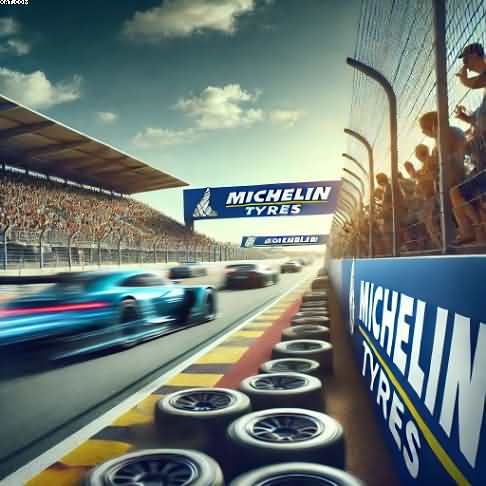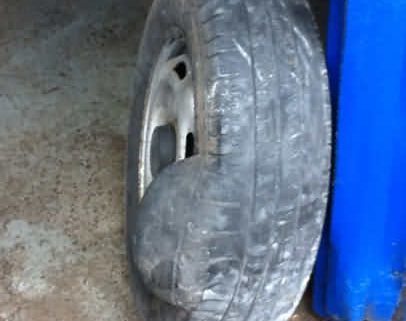Michelin Zero Pressure Tyres
Table of Contents
Michelin Zero Pressure Tyres
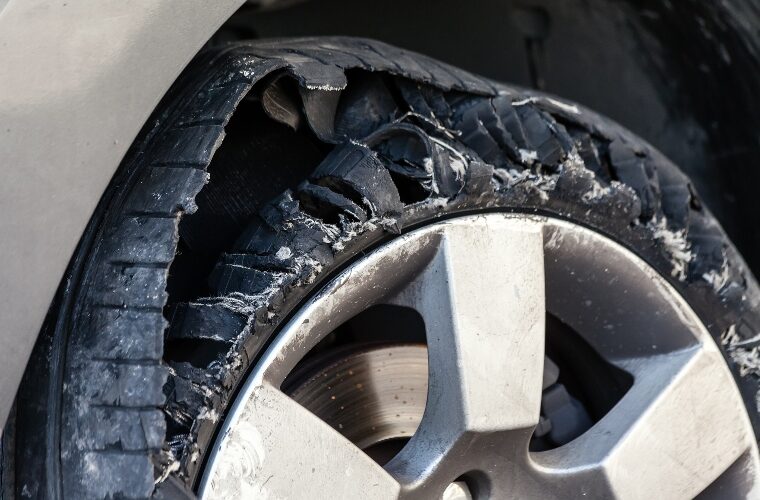
Michelin Zero Pressure Tyres
Michelin’s call their tyre the ZP, or Michelin Zero Pressure.
This, of course, refers to the fact that when the run-flat tyre deflates, it will carry on running with zero air in the tyre. This is exactly what the run-flat does. Because of the much stronger
side walls, the tyre will not deviate from its course. The driver is warned about the deflation from inside the car by the TPMS system (tyre pressure monitoring system).
Let’s face it, our roads are probably the busiest in Europe. Consequently, nobody enjoys having to change a wheel at the side of the road. In fact, they now warn us to stay well away from the car.
Preferably at the top of the embankment. Importantly, while the recovery truck turns up! Because of the many accidents caused by broken-down vehicles. Of course, other vehicles will lose focus and crash into them from behind.
With the Michelin Zero Pressure run-flat technology fitted to your car,. Then this will be avoided. These tyres will lose pressure from a nail or a screw penetration. But your car will keep a straight line, and you will be able to drive home. Albeit at a reduced speed of 50 mph, the tyre will let you travel 50 miles. Naturally, this should be enough to get you out of trouble and have the tyre changed
Michelin Zero Pressure Tyres: Can you mix run-flat tyres with normal radial tyres?
Michelin recommends that you never mix a Michelin Zero Pressure run-flat tyre with a non-run-flat normal radial tyre. The only exception to this rule is if you were stranded in the middle of nowhere. With the only tyre depot for miles around, you could only get a normal tyre. Subsequently, this would be acceptable as a last resort; get you home step, and the tyre must be changed back to a run-flat as soon as possible.
The Michelin Zero Pressure run-flats have completely different sidewalls; they are made of much thicker materials and are known as “self-supporting tyres,” or SST’s. They have two other identification markings on the sidewalls.
1: ZP allows you to drive at 50 mph for speeds up 50 mph (most of the M1 motorway at the moment)
2: ZP SR allows you to drive for 20 miles at 50 mph
Michelin Zero Pressure offer the same ride capabilities as a normal radial tyre- Michelin Zero Pressure Tyres
The first time I drove a BMW Mini that was equipped with run-flat tyres I thought I was in an old truck going down a cobbled road. The ride was horrendous, and my staff, who regularly test drive cars, say that this is a common thing. The ride is very hard because the sidewalls are so thick and reinforced. Michelin claims that their zero-pressure tyres are not the same and give just as good a ride as their normal radial tyres.
Although I have not tried out a car fitted with Michelin Zero Pressure, this has got to be a step in the right direction, and I will try out these tyres as soon as possible to quantify their claims.
However, some fleet companies are now looking at the Michelin because of the more comfortable ride and improved fuel consumption. These tyres have been tested by fleet company Alphabet’s Operational Services Manager, Andy Williams.
He explained, “The comfort compromise everyone used to associate with run-flats has disappeared with the latest technology of tyres.
I have tried Michelin’s new Zero Pressure (ZP) range – Michelin Zero Pressure Tyres
Trust me, you can’t tell the difference from standard tyres. Yes, there have been critics of run-flat tyres in the past, but Michelin has answered all of them. It is high time fleet managers started to embrace the new technology, as it has so much to offer.
The combination of a smooth ride and increased safety is something they just can’t afford to ignore. The fact that a tyre keeps its shape when it loses pressure could be life-saving in the event of a tyre blow-out.”
As I stated earlier, this means that the fleet car user can now safely drive the vehicle to a tyre centre or garage and have the tyre replaced.
This will help to reduce downtime
caused in the past by the driver calling out the emergency services because they are not able to change the wheel themselves or the car is stranded in a dangerous place.
For the private drivers who are fitted out with run-flat tyres it would be well worth trying out these new Michelin Zero Pressure tyres because of the better and less harsh ride that is associated with the other run-flat makes of tyres.
Pellon Tyre and Auto-Centre offers car and van servicing and repairs to all makes of vehicles. We also sell Michelin Zero Pressure Tyres online.
Update: Michelin Zero Pressure Tyres
We’ve noticed more drivers asking about Michelin Zero Pressure tyres lately, so here’s a quick update for folk around Halifax who might be thinking about them. These clever run-flat tyres are designed so you can keep driving for a short distance even after a puncture — usually up to around 50 miles at a steady speed.
Handy if you’re stuck on the tops between Halifax and Haworth, or down some of our narrow Calder Valley lanes where there isn’t space to start faffing with a jack. They’re built with reinforced sidewalls, so the tyre holds its shape even with no air in it. As always, we fit and supply them here at Pellon Tyres, and we’ll make sure your car is properly set up for run-flats if you fancy switching over.

